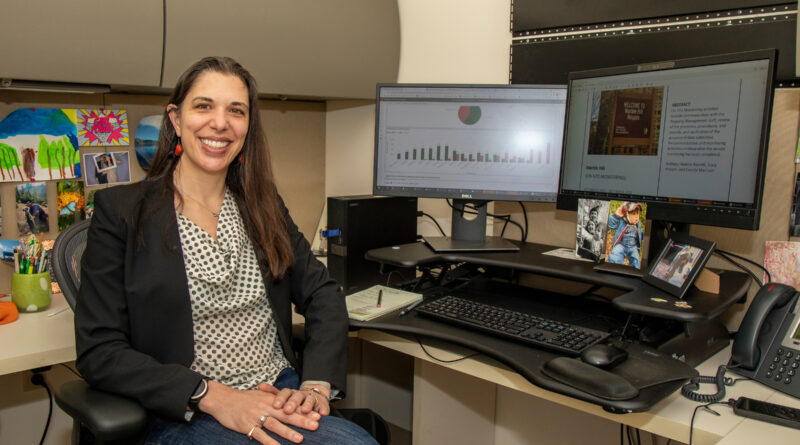Making a Difference
Meet Katie Gordon, Deputy Director of Compliance Monitoring
Meet Katie Gordon, Deputy Director of Compliance Monitoring in the Compliance Department. Katie has worked at NYCHA since 2017. She previously worked as a senior analyst in the Authority’s Office of Strategic Innovations before joining the Compliance team. Before coming to NYCHA, she worked at a nonprofit in Brownsville, Brooklyn; at the NYC Department of Small Business Services; and as a teacher.
The Compliance Monitoring Unit plays an important role in the department’s mission to ensure that the Authority complies with laws and regulations. As Deputy Director, one of the major projects Katie manages is the On-Site Monitoring program. This involves working with property management staff to create corrective action plans to close compliance gaps so that NYCHA developments are safe and healthy for residents, employees, and vendors.
“Through Katie’s leadership — and the hard work of the Monitoring, EH&S, and Quality Assurance teams — the Onsite Monitoring Program is becoming a benchmark of how compliance can change NYCHA for the better,” said Daniel Greene, Chief Compliance Officer. “Katie has forged collaborative relationships with property management, elevators, heating, and other departments in order to address real issues at the property level. Since 2020, the OSM program has addressed over 5,900 deficiencies across all borough management groups in areas such as heating, mold, elevators, general property conditions, and others. Katie’s ability to collaborate with other departments and identify creative and flexible solutions to problems has made the OSM program a success.
“Ninety-five percent of what my team does is conducting on-site monitoring every two weeks of properties that we deem at risk. Every six months, we look at data from Maximo [NYCHA’s work order system] to help us choose high-risk or at-risk developments from each borough. We look at things such as the number of mold complaints, how long it takes to respond to elevator outages, average days to turn around an apartment, number of open lead orders, number of open skilled trades orders, and more. We come up with a list of all the problems at the development; for instance, one of the boilers has a leaking steam valve, there’s a vacant housing assistant position, the compactor is broken. There are usually between 250-300 issues per development; the average number of deficiencies right now is 245 and growing. We continue to add more areas of investigation to our reports, which is why the volume of deficiencies is growing.
“We work with property management staff every week until every deficiency on that list is complete, corrected, addressed, and work orders are closed in Maximo. We work with properties anywhere from nine months to a year. By the end of 2021, we’ll have gone to 39 properties.”
“I’m very impressed by the work my team and the property management staff do to sort through all the work, to find vendors, to fix things that are really important and complex. None of the repairs we work on are simple or straightforward. Property management staff have to gain access, submit paperwork to various units, upload pictures, and track all of this in Maximo – and keep doing their regularly assigned duties at the same time. I’m inspired by everyone’s dedication, perseverance, and organization to make this project a success. It’s great to look back at how they began with a pile of 300 problems and, hopefully, in nine months say, ‘Wow, look at this, you did it!’ It takes a lot of patience and teamwork. I’m really honored to be part of this positive change at NYCHA.”
“We also do remote monitoring. We call it ‘site assessment monitoring’ for higher risk properties that are smaller, with 700 apartments or fewer. (On-site monitoring is typically limited to our larger properties with 975 apartments and above and the most at-risk properties in the borough.) We monitor using Maximo and any data we can get our hands on about the developments. So, although we spend most of our time at the bigger properties, we’re not forgetting about the smaller properties that are under performing.”
“The other projects my team works on is monitoring and reporting on all lead activities for the agency – anything from annual inspections, common areas, apartments with children under 6, and other apartments. We issue this report six times a year. Additionally, we also work on reviewing our processes to ensure we are adhering to requirements for federal funding, spending money correctly, making sure we have all the documents we need to show that we’re doing things correctly, and liaising between the Law Department and Operations to essentially track that work gets completed on time.”







